Saint Roch Chapel
( Municipality of Plourin)

Open to the public only during the animations.
Parking (GPS): 48°30'23.6 N 4°42'54.2 W
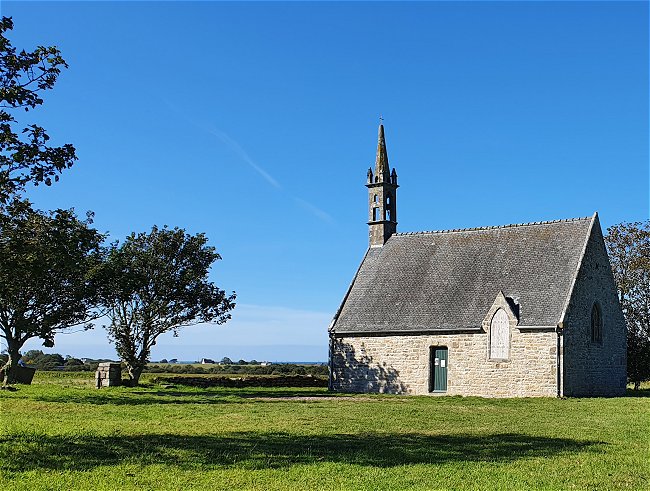
Access :
Leave St-Renan on the D68 road towards Argenton and continue straight. After the second roundabout drive another 1.7 km. You can see the chapel on the right of the road. Take the small path that borders it and park in the field of the chapel.
The Saint-Roch chapel is only very rarely open to the public for obvious security reasons. It was built in 1649 after a terrible plague epidemic struck the entire region from 1642 to 1647. The inhabitants of the parish had indeed prayed to Saint Roch to be spared by the disease and made the wish to build him a chapel if their prayers were answered.
Since the Middle Ages, Saint Roch was invoked wherever the plague struck the population. Born in 1295 into a wealthy family in Montpellier, he had dedicated his pilgrim life, especially in Italy, to the care of the pestiferous. He had contracted the disease himself but had healed, which seemed miraculous. Back in France, he was mistaken for a foreign spy and died in prison around 1379. His reputation as a healer and his cult had spread very quickly among the people.
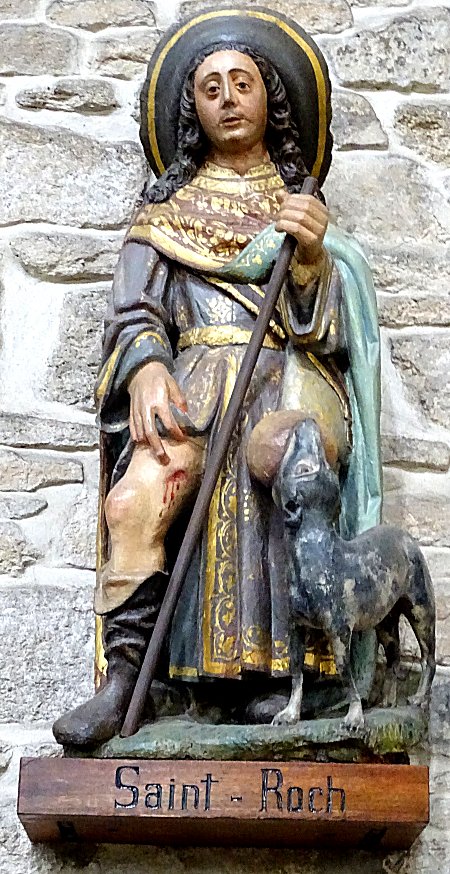
The statue of St Roch, inside the church of St Renan.
Prisoner, the saint, whose leg presents a bubo oozing blood,
is accompanied by his dog Roquet
which feeds him as every day with a bread he stole for its master.
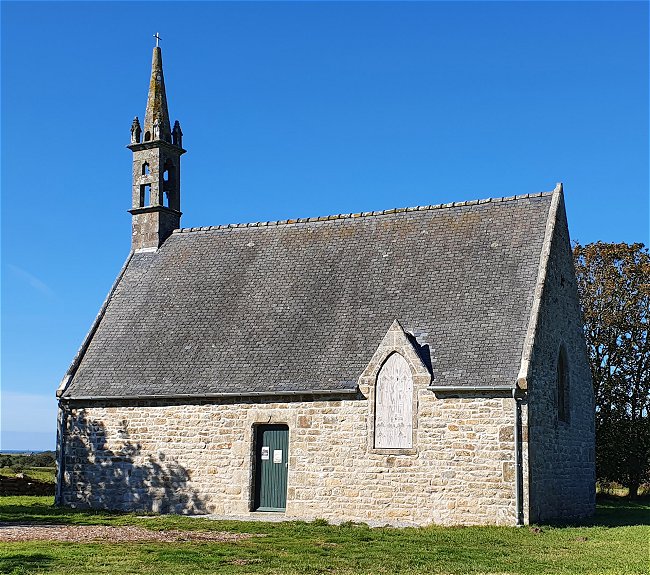
As a precaution, the inhabitants chosed to build the chapel a place far from the village and from any habitation. The presence of potential visitors still carrying the disease was always to be feared.
The building, very sober, is equipped with a bell tower surmounted by four pinnacles and a short spire. Its opening allowing to see the bell is triloballed.
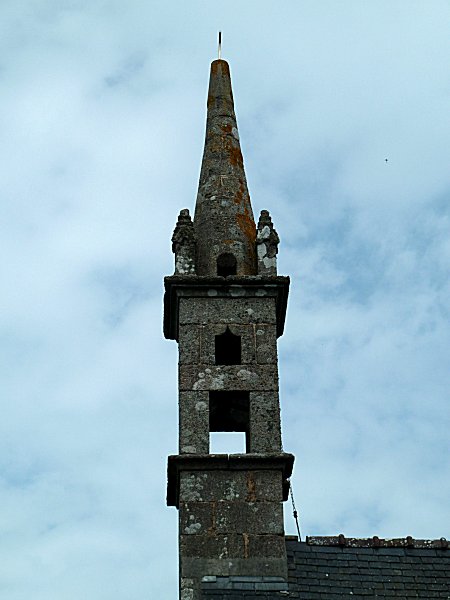
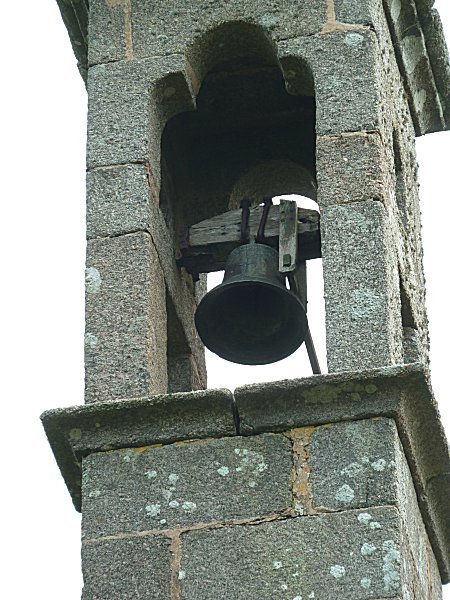
The ornamentation of the semi-circular entrance is limited to arches and small columns. The superior arch houses the coat of arms, now totally eroded, of the Du Chastel, lords of Trémazan.
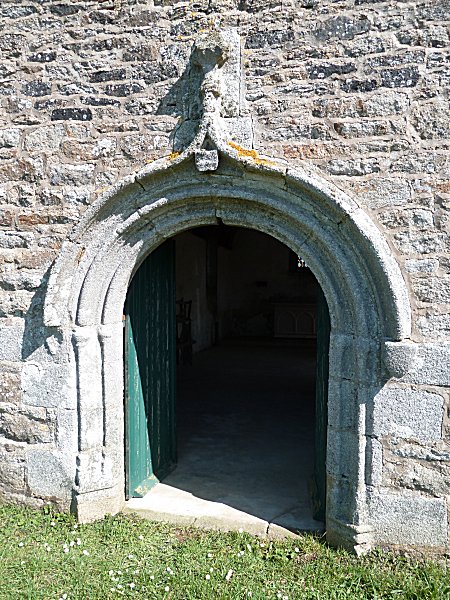
A restoration carried out in 1867 provided the building with a vast and heavy slate roof. This is no doubt the reason why the walls of the building were diverging under this weight until 2018.
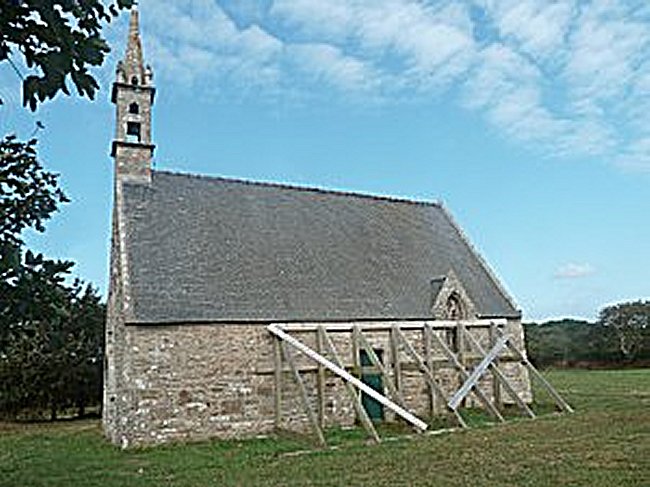
Despite makeshift shoring, cracks were appearing in the walls.
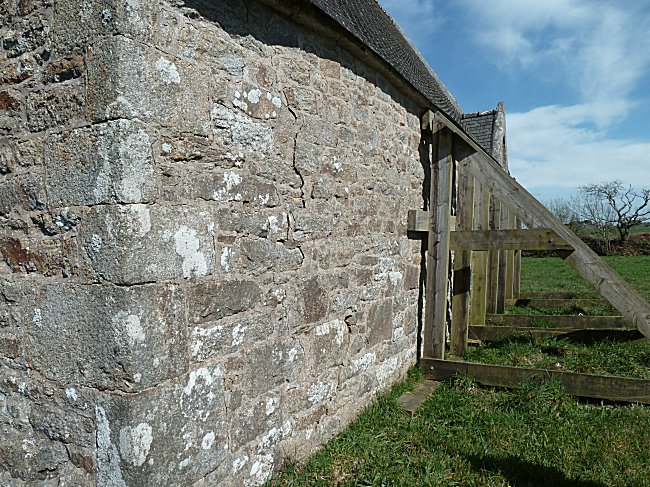
The interior of the building showed a magnificent very high and oversized framework. We can guess that it supported the blue slats of a barrel vault. Some had been recovered for repairs.
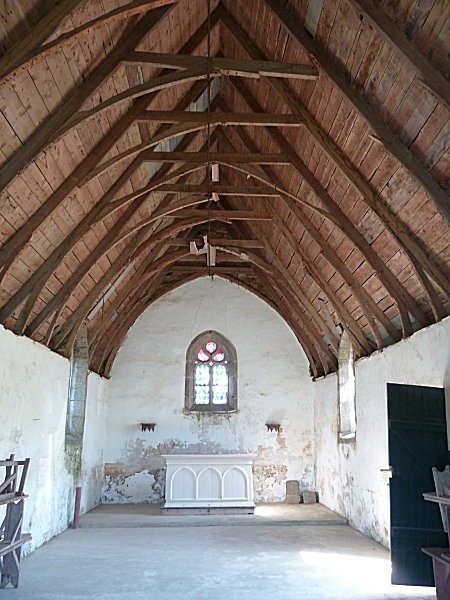
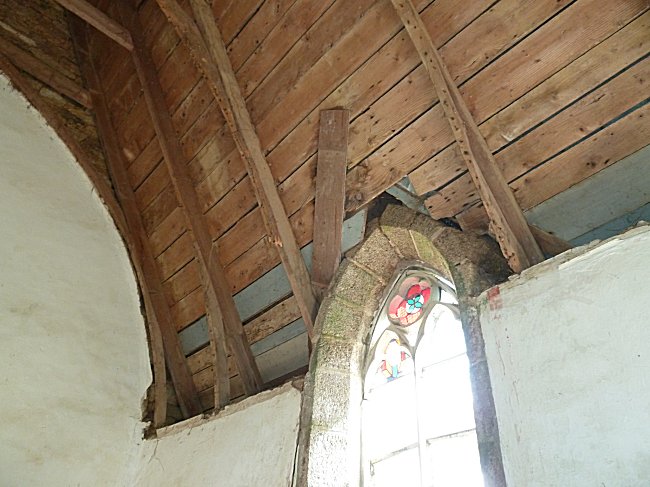
Apart from a very sober wooden altar and a built-in holy water font, no furniture or statuettes remained.
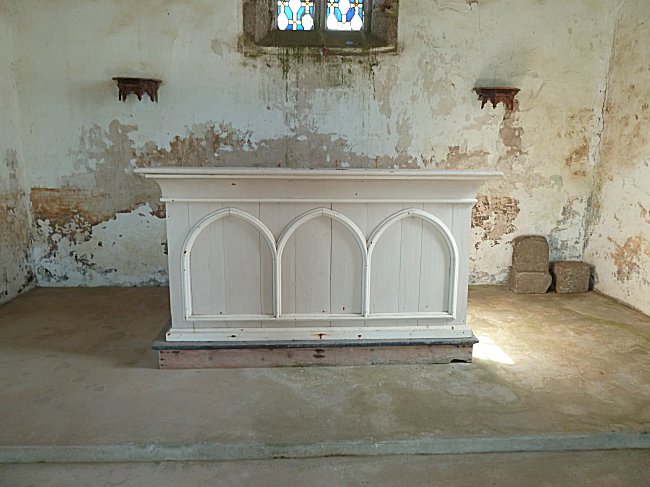
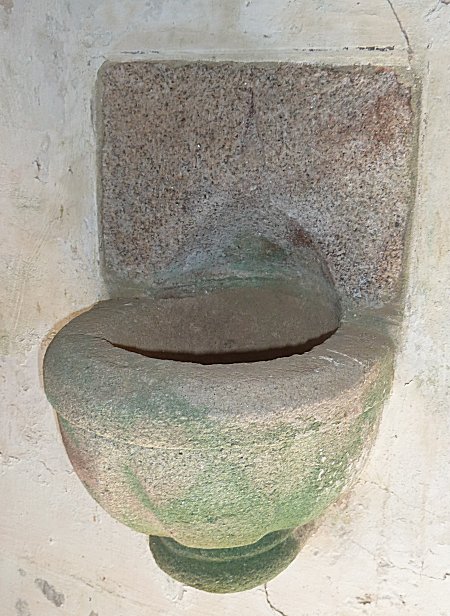
The choir window showed two panels surmounted by a three-lobed decoration.
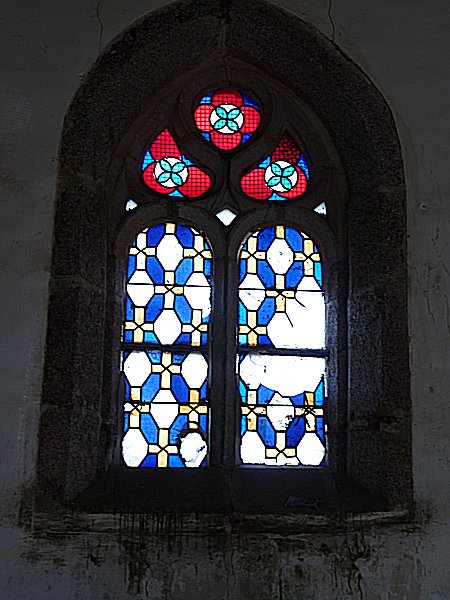
By examining the cracks in the walls we can better understand why the building is not open to the public.
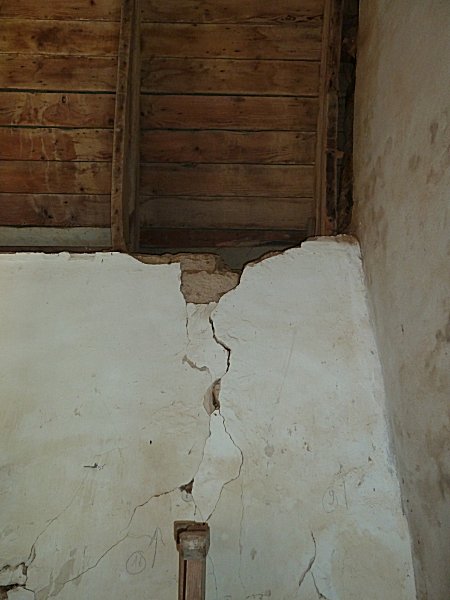
However, this state is currently moving : the new association Teñzorioù Ploerin ( The Treasures of Plourin) has set itself the goal of safeguarding natural and cultural heritage of the municipality. It undertook to reopen the file concerning the St-Roch chapel. And thanks to a subscription and grants, it began restoring the monument.1.
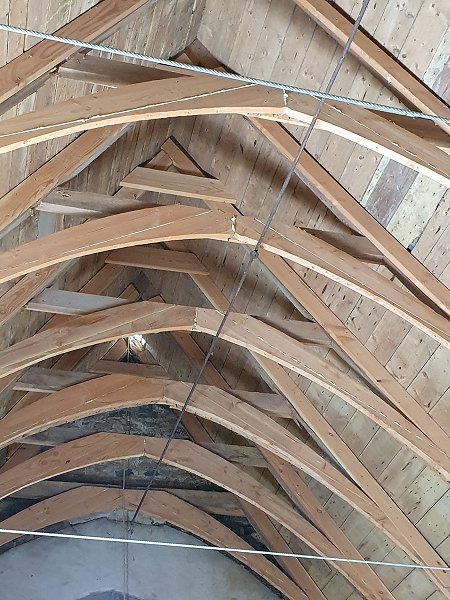
The cracked wall and the frame have been completely renovated. And steel tie rods are now consolidating the building. But that's not all : a brand new stained glass has been put in the choir window.
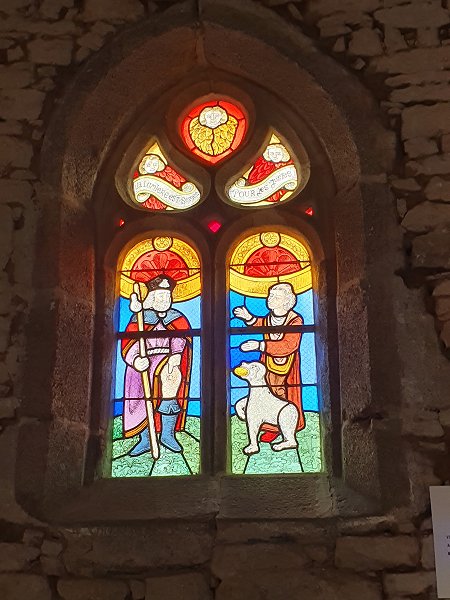
The three lobes present a maxim taken from Psalm 97 of the Bible.
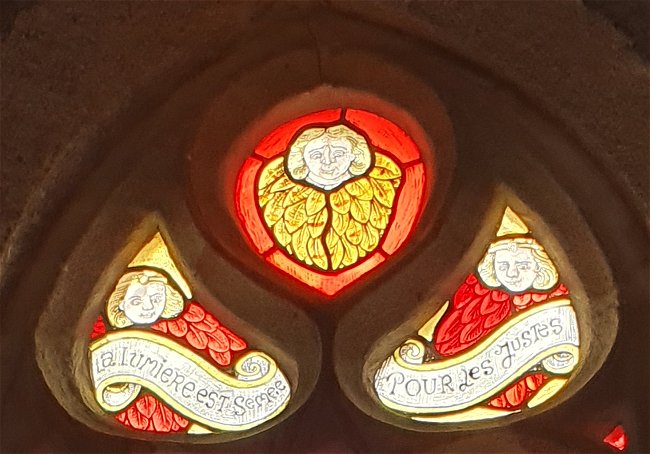
The first panel reminds us that Saint Roch had cured from the plague. He shows the trace of his bubo2.
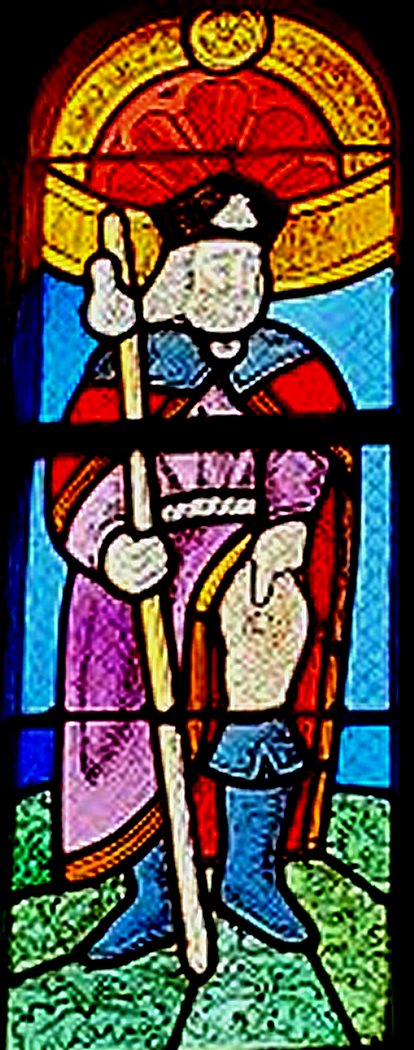
The second panel represents Saint Roch in prison and his dog Roquet bringing him a loaf of bread.
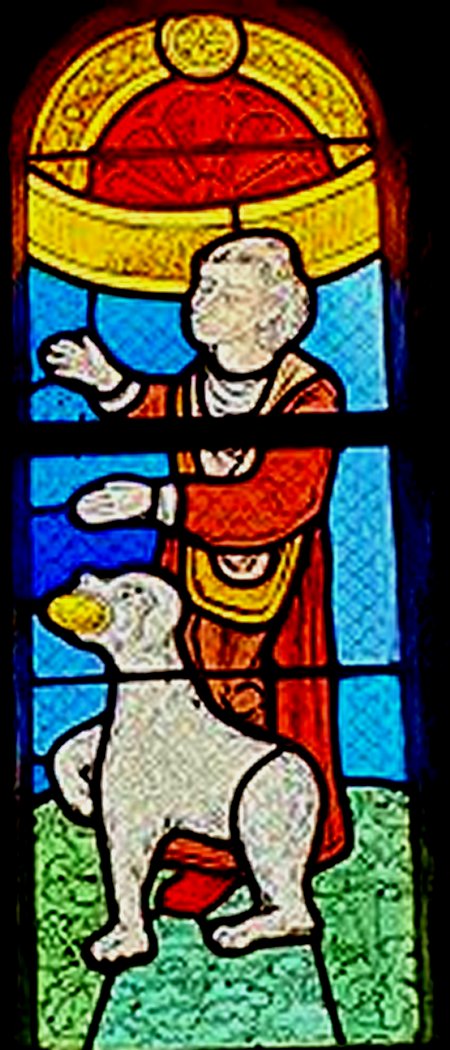
Many other restoration works are planned so that this small jewel of our heritage may one day become a place of worship. It can only be visited during certain events.
-1-
The public can also participate by sending cheques of support in the name of Teñzorioù Ploerin to the Plourin town hall. You can access the web pages of this association by simply typing its name on the web.
-2-
Left thigh or right thigh, a little too high or a little too low, it doesn't matter. Each artist represents the sacred inguinal bubo as he pleases or likes.




